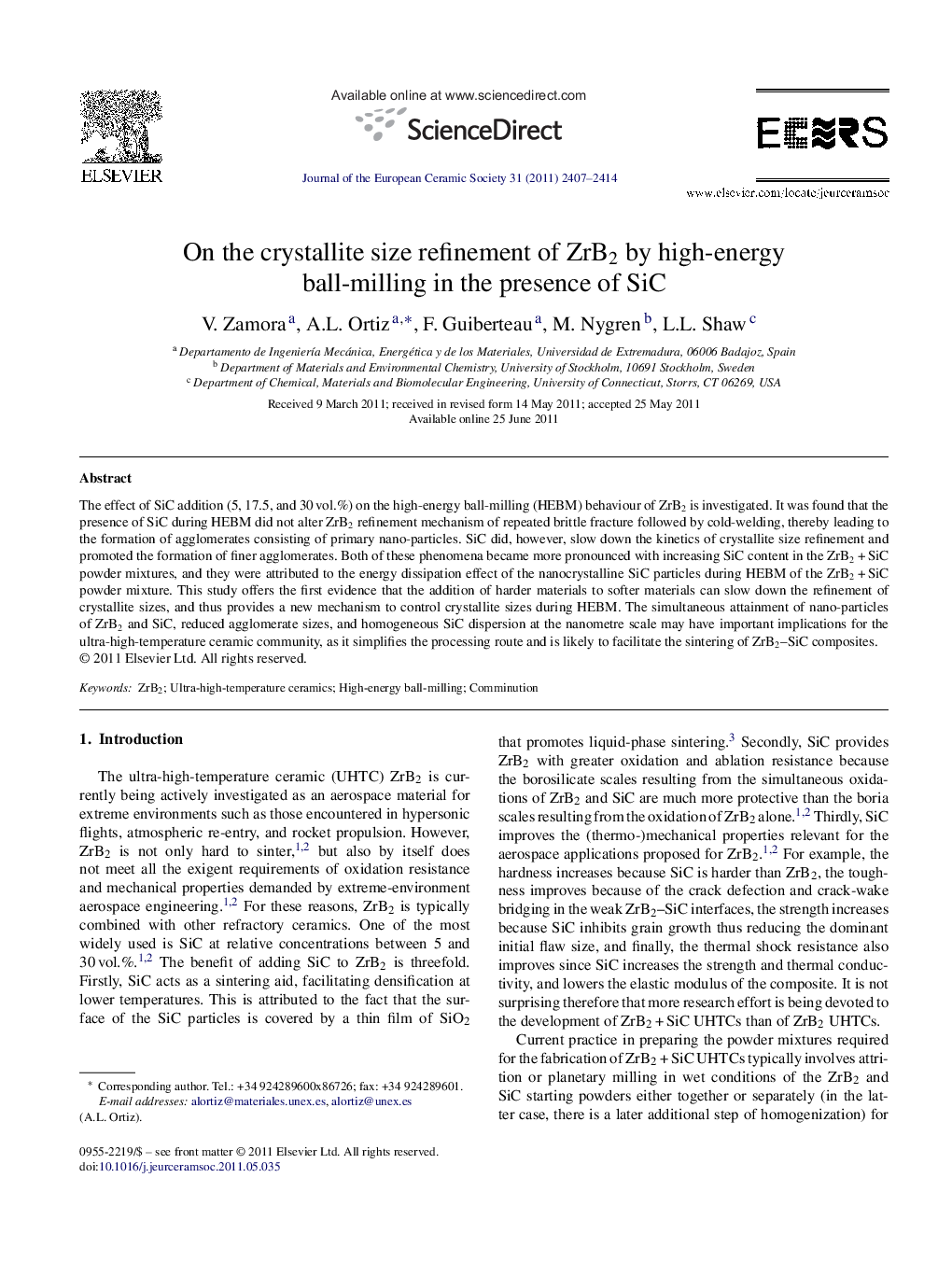| کد مقاله | کد نشریه | سال انتشار | مقاله انگلیسی | نسخه تمام متن |
|---|---|---|---|---|
| 1475816 | 991130 | 2011 | 8 صفحه PDF | دانلود رایگان |

The effect of SiC addition (5, 17.5, and 30 vol.%) on the high-energy ball-milling (HEBM) behaviour of ZrB2 is investigated. It was found that the presence of SiC during HEBM did not alter ZrB2 refinement mechanism of repeated brittle fracture followed by cold-welding, thereby leading to the formation of agglomerates consisting of primary nano-particles. SiC did, however, slow down the kinetics of crystallite size refinement and promoted the formation of finer agglomerates. Both of these phenomena became more pronounced with increasing SiC content in the ZrB2 + SiC powder mixtures, and they were attributed to the energy dissipation effect of the nanocrystalline SiC particles during HEBM of the ZrB2 + SiC powder mixture. This study offers the first evidence that the addition of harder materials to softer materials can slow down the refinement of crystallite sizes, and thus provides a new mechanism to control crystallite sizes during HEBM. The simultaneous attainment of nano-particles of ZrB2 and SiC, reduced agglomerate sizes, and homogeneous SiC dispersion at the nanometre scale may have important implications for the ultra-high-temperature ceramic community, as it simplifies the processing route and is likely to facilitate the sintering of ZrB2–SiC composites.
Journal: Journal of the European Ceramic Society - Volume 31, Issue 13, November 2011, Pages 2407–2414